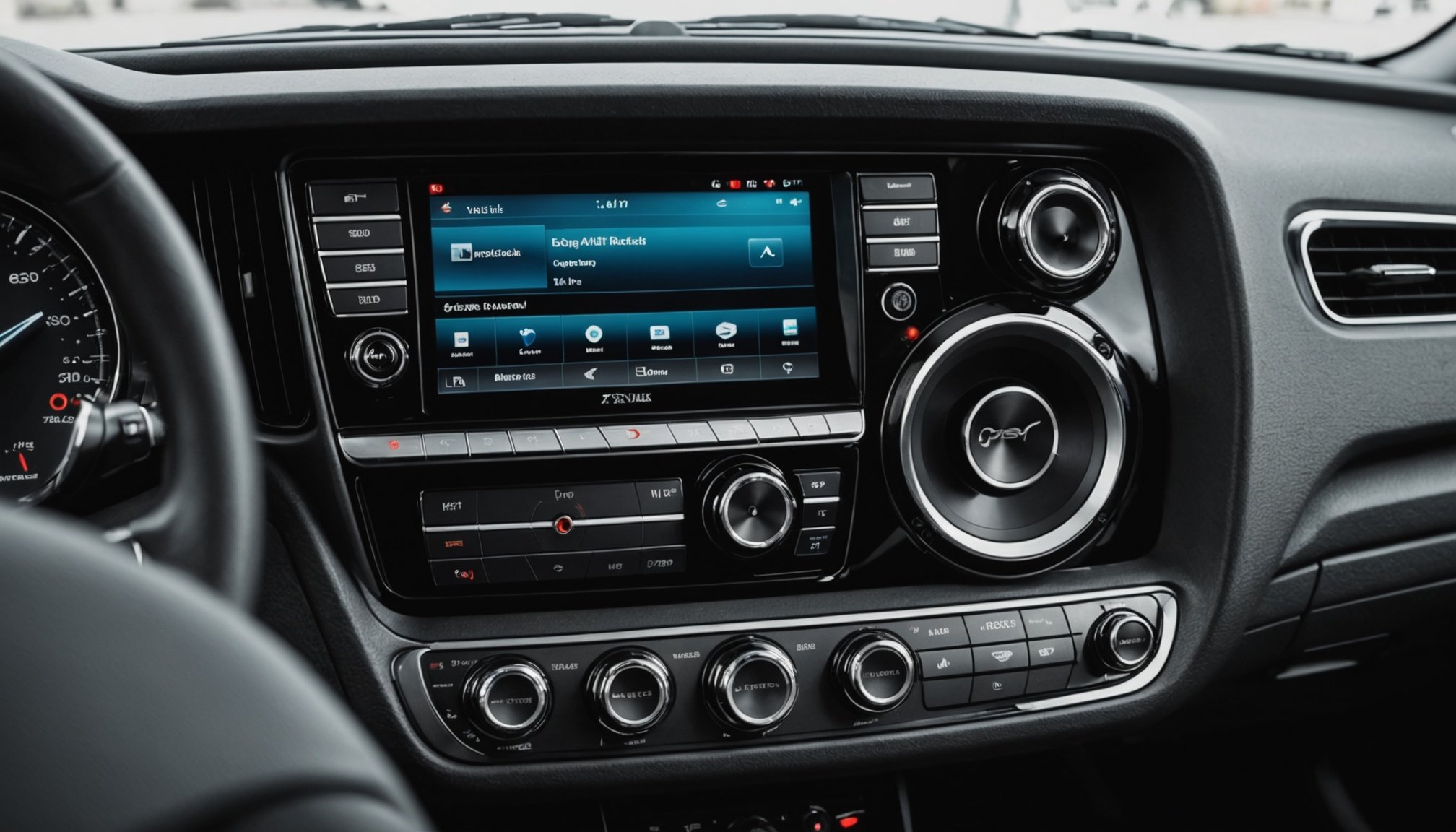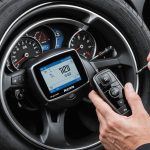Understanding Custom Audio Systems
Custom audio systems represent a significant enhancement over standard car audio. They are tailored to deliver superior sound quality, allowing for a personalised listening experience. Key components usually include amplifiers, speakers, subwoofers, and a head unit. Each part plays a crucial role in enriching sound clarity and depth. But why consider a car audio upgrade?
-
Improved Sound Quality: Custom systems are designed to produce clearer and more nuanced sound, catering to audiophiles and casual listeners alike.
This might interest you : Ultimate handbook: a comprehensive step-by-step guide to polishing and waxing your uk car for paint protection
-
Enhanced Listening Experience: Tailor the system to your musical preferences, allowing for an immersive audio experience.
-
Increased Value: A well-installed audio system can boost a car’s market value.
Also read : Ultimate guide to modernizing classic uk cars with adaptive cruise control: a simple step-by-step approach
Before diving into installation, several factors should be considered:
- Vehicle Compatibility: Ensure the components fit your car model.
- Budget: Determine how much you’re willing to invest; costs vary widely.
- Professional Assistance: Decide whether to hire an audio specialist or go the DIY route.
A strategic approach ensures not only optimal sound performance but also protects against any potential technical hiccups during the installation process.
Tools and Equipment Required
Embarking on a custom audio system installation involves equipping yourself with the right audio installation tools. For a seamless installation process, you’ll need an array of essential tools. A basic toolkit should include wire strippers for handling cables, crimping tools for secure connections, and a multimeter to test the system’s electrical parameters. Screwdrivers and panel removal tools are also crucial for safely disassembling and reassembling your car components.
When it comes to selecting the essential equipment, brands like Rockford Fosgate, Alpine, and Pioneer are renowned for their quality and reliability. These brands offer a range of components from amplifiers to subwoofers that cater to various audio preferences and budgets. Investing in high-quality equipment is fundamental for achieving optimal sound performance. Good equipment ensures durability and a superior listening experience, preventing issues like distortion that are common with subpar systems.
Be sure to consider not just the functionality but the compatibility of these tools and equipment with your vehicle model. Proper planning and selection can save time and expense during the installation process and ensure the most effective results.
Step-by-Step Installation Process
Upgrading your vehicle with a custom audio system involves a well-structured approach. This ensures that sound quality is optimised and technical issues are minimised.
Preparation and Planning
Start by gathering all necessary audio installation tools and equipment. Verify that each component aligns with your vehicle model to ensure compatibility. Carefully plan the installation layout—decide on the placement of speakers, the head unit, and any subwoofers.
Removing the Existing Audio System
Carefully remove the existing audio components. Use panel removal tools to access the installed systems without damaging surrounding areas. Disconnect all wiring harnesses and brackets. This stage is delicate; rushing can lead to potential damage or future issues.
Installing New Components
Begin by installing the new head unit, ensuring it’s securely fitted and precisely wired. Follow by adding the speakers and subwoofers. Pay close attention to speaker polarity, as incorrect wiring can lead to sound distortion. Finally, connect amplifiers and other additional components as desired. Aim for neatness with wiring to avoid tangling and ensure easy troubleshooting if necessary.
By following these step-by-step instructions, you establish a quality car audio upgrade. This process paves the way for a superior listening experience in your vehicle.
Troubleshooting Common Issues
Properly installing a custom audio system can greatly enhance your car’s sound experience, but occasionally issues may arise. Understanding these common installation problems is crucial for maintaining optimal audio performance.
Common Problems and Solutions
-
Sound Distortion: This often occurs when speakers are improperly wired. Ensure speaker polarity is correctly aligned—mismatched wiring leads to muddled sound. Checking and adjusting connections often resolves this quickly.
-
Connectivity Issues: Loose or incorrect wiring can result in the stereo not functioning properly. Verify that all cables are securely connected, and double-check the wiring harnesses. You should follow the system’s wiring diagram closely for accurate connections.
-
Component Compatibility: Choosing components that don’t fit your car model can create problems. It’s essential to confirm the compatibility of each piece of equipment with your vehicle.
Testing and Adjustments
Once installed, conduct a thorough testing phase. Play various audio tracks to assess the quality of sound. Make necessary adjustments to components like amplifiers or head units for fine-tuning. Regular testing not only catches hidden problems but also ensures that your custom audio system is performing at its best.
Compliance with UK Regulations
Navigating the world of custom audio systems also involves understanding the legal landscape, especially if you’re eyeing a car audio upgrade in the UK. Ensuring compliance with UK vehicle regulations is not just a formality but a crucial step to avoid penalties and maintain road safety.
Overview of Legal Requirements:
UK regulations stipulate that all modifications, including custom audio systems, must not impede the driver’s control or interfere with the vehicle’s operation. For example, the positioning and securing of components, such as speakers and amplifiers, should not obstruct driver visibility or access to essential controls.
Importance of Compliance:
Adhering to these guidelines ensures your vehicle remains legally operable, preventing any potential disputes or insurance issues. Besides, a non-compliant system can lead to fines or even mandatory removal of the components, translating to an unnecessary financial setback.
Potential Consequences of Non-Compliance:
Ignoring these regulations can result in hefty fines and compromise your vehicle’s insurance coverage. In the worst-case scenario, it could lead to legal action that affects your driving record. Thus, staying informed and compliant is as crucial as the installation process itself.
Visual Aids and Resources
Utilising visual aids can significantly enhance the custom audio system installation process, making it more accessible. Installation visuals such as diagrams and step-by-step images aid in clarifying complex setups. They help you understand the intricate wiring configurations and component placements, reducing the likelihood of errors.
Importance of Visual Aids
Visuals cater to both beginners and experienced installers by simplifying technical information. They transform abstract instructions into tangible actions, ensuring clarity. This can be especially useful when dealing with specific audio installation tools or unique car models, where every detail counts.
Recommended Resources
When embarking on a car audio upgrade journey, various resources are invaluable. Video tutorials provide a dynamic understanding of tasks like mounting speakers or aligning amplifiers. Online forums can be treasure troves of user experiences and troubleshooting advice, allowing you to learn from community insights.
While engaging with visual aids, don’t overlook manufacturer’s guidelines. They offer specific details tailored to their products, ensuring that installations comply with given specifications. These resources collectively support a smooth installation, leading to a successful and satisfying audio system upgrade.
Frequently Asked Questions
When it comes to audio system FAQs, numerous common questions about installations arise, reflecting a keen interest in achieving optimal results. Here’s a compilation of frequently asked questions with expert answers and tips to assist audio enthusiasts.
What are the primary components of a custom audio system?
A custom audio system typically includes amplifiers, speakers, subwoofers, and a head unit. Each component plays a distinct role; amplifiers boost signal strength, speakers output audio, subwoofers add bass depth, and the head unit serves as the control centre.
What benefits do custom audio systems offer over standard ones?
Car audio upgrades enhance sound quality, offering a more immersive listening experience. They can also increase the vehicle’s value, provide tailored music preferences, and deliver clearer, more nuanced sound for audiophiles.
How can I ensure a smooth installation process?
Preparation is key. Verify vehicle compatibility for all components. Choose quality equipment and consider hiring a professional for complex installations. Proper planning and understanding of the vehicle model’s intricacies prevent complications.
For additional resources, delve into video tutorials or online forums, where community insights and expert knowledge come together to support your custom audio system journey.









